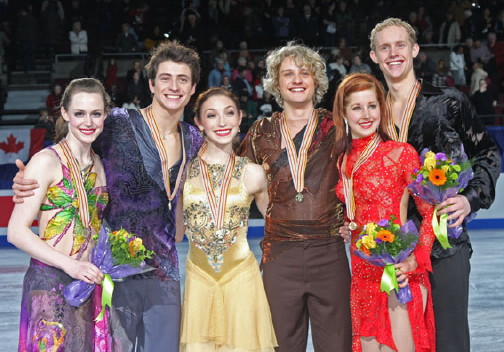2009 Four Continents Figure Skating Championships on:
[Wikipedia]
[Google]
[Amazon]
The 2009




Official site
*
Competitors list
* {{2008–09 in figure skating Four Continents Figure Skating Championships
Four Continents Figure Skating Championships
The Four Continents Figure Skating Championships (4CC) is an annual figure skating competition. The International Skating Union established it in 1999 to provide skaters representing non-African and non-European countries with a similar competit ...
an international figure skating competition in the 2008–09 season. It was held at the Pacific Coliseum
Pacific Coliseum, known to locals as "The Coliseum" or the "Rink on Renfrew," is an indoor arena located at Hastings Park in Vancouver, British Columbia. Its main use has been for ice hockey and the arena has been the home for several ice hocke ...
in Vancouver
Vancouver ( ) is a major city in western Canada, located in the Lower Mainland region of British Columbia. As the List of cities in British Columbia, most populous city in the province, the 2021 Canadian census recorded 662,248 people in the ...
, Canada
Canada is a country in North America. Its ten provinces and three territories extend from the Atlantic Ocean to the Pacific Ocean and northward into the Arctic Ocean, covering over , making it the world's second-largest country by tot ...
on February 2–8. Medals were awarded in the disciplines of men's singles, ladies' singles, pair skating
Pair skating is a figure skating discipline defined by the International Skating Union (ISU) as "the skating of two persons in unison who perform their movements in such harmony with each other as to give the impression of genuine Pair Skating a ...
, and ice dancing
Ice dance (sometimes referred to as ice dancing) is a discipline of figure skating that historically draws from ballroom dancing. It joined the World Figure Skating Championships in 1952, and became a Winter Olympic Games medal sport in 1976. Ac ...
. The compulsory dance
The compulsory dance (CD), now called the pattern dance, is a part of the figure skating segment of ice dance competitions in which all the competing couples perform the same standardized steps and holds to the music of a specified tempo and ge ...
was the Finnstep.
Notes
Skaters who reached the age of 15 by July 1, 2008 were eligible to compete. Unlike the other three ISU championships, each nation was allowed three entries in each discipline, regardless of its skaters' performance in the previous year's championships. The corresponding competition for European skaters was the2009 European Figure Skating Championships
The 2009 European Figure Skating Championships was a senior international figure skating competition in the 2008–09 season. Medals were awarded in the disciplines of men's singles, ladies' singles, pair skating, and ice dancing. The event wa ...
.
This event served as the Olympic test event for figure skating for the 2010 Vancouver Olympic Winter Games although the rink was NHL-sized.
Schedule
(Local Time, UTC−8) * Wednesday, February 4 ** 13:00 Ice dancing – Compulsory dance ** 15:15 Pairs – Short program ** 17:30 Opening ceremony ** 18:15 Ladies – Short program * Thursday, February 5 ** 11:00 Ice dancing – Original dance ** 13:35 Pairs – Free skating ** 16:30 Men – Short program * Friday, February 6 ** 13:45 Ice dancing – Free dance ** 18:00 Ladies – Free skating * Saturday, February 7 ** 10:45 Men – Free skating * Sunday, February 8 ** 12:00: Gala exhibitionResults
Men

Ladies

Kim Yuna
Yuna Kim (; born September 5, 1990), also credited in eastern name order as Kim Yuna or Kim Yeon-a, is a retired South Korean competitive figure skater. She is the 2010 Olympic champion and 2014 Olympic silver medalist in ladies' singles, ...
set a new world record for the short program.
Pairs

Ice dancing

References
External links
Official site
*
Competitors list
* {{2008–09 in figure skating Four Continents Figure Skating Championships
Four Continents
Europeans in the 16th century divided the world into four continents: Africa, America, Asia, and Europe. Each of the four continents was seen to represent its quadrant of the world—Africa in the south, America in the west, Asia in the east, ...
Four Continents
Europeans in the 16th century divided the world into four continents: Africa, America, Asia, and Europe. Each of the four continents was seen to represent its quadrant of the world—Africa in the south, America in the west, Asia in the east, ...
Four Continents
Europeans in the 16th century divided the world into four continents: Africa, America, Asia, and Europe. Each of the four continents was seen to represent its quadrant of the world—Africa in the south, America in the west, Asia in the east, ...